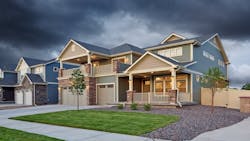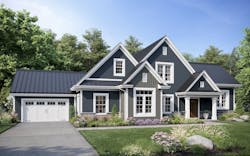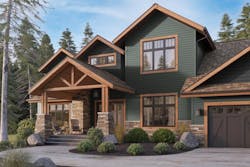How Vinyl Siding Can Prepare Homes for Extreme Weather Events
As extreme weather events become more severe across the country, the need for durable exterior products and weatherizing new and existing homes becomes paramount.
The correct structural and weatherization products can significantly reduce the potential for damage. One impactful product that protects against high winds, impact, and energy loss is vinyl siding.
Vinyl Siding Fights Back Against High Winds
High-velocity winds can threaten homes across the country, and siding is among the first lines of defense for a home, but it needs to be durable enough to fight back against nature’s worst.
Vinyl siding product development follows some of the country’s most stringent codes. In 1992, Hurricane Andrew made landfall in Miami-Dade County. The Category five hurricane pushed the county to adopt some of the most strict building codes, and siding manufacturers follow these requirements for products used nationwide.
The extra-thick vinyl siding panels can withstand impact from wind-blown debris and strong winds. The panels come with interlocking hems, double-rolled nail hems, and reinforced end butts for added security. This type of siding isn’t just suitable for hurricane-prone regions, and any environment that may frequently experience high winds from storms.
Protecting Homes from Impact and Energy Loss
Intense heat waves and below-freezing temperatures have impacted the nation in addition to devastating hurricanes. Advanced home insulation systems help to minimize heat or cooling loss, and again, the proper exterior siding becomes vital.
Today’s vinyl siding technologies include breathable foam that adds a layer of continuous insulation around the building envelope that significantly reduces thermal bridging—or energy loss. And that insulation offers robust protection against dents caused by hail and ice during severe storms.
UV Resilience of Vinyl Siding
The harmful effects of UV rays on our skin are well known, but UV rays can also damage homes. Panel siding can become distorted, but some modern siding materials function as permanent sunscreen for homes, offering crucial protection against UV rays.
This advanced siding features a multi-layer design: the top layer disperses heat by allowing light energy to flow in both directions, followed by a second layer of cooling compound, and a final base layer that withstands any remaining heat.
Thanks to these innovations, trending exterior design choices like black siding and trim are now viable without the risk of fading or becoming too hot—issues that plagued dark materials in the past.
This evolution allows builders and contractors to adapt more readily to emerging trends, meet customer preferences, and fulfill architects' design visions, making the industry more agile in responding to changing demands.
Designing for Wild Western Climates
The Wild West is characterized by a range of unique and challenging environmental conditions that can significantly impact the durability of building materials. High elevations expose structures to thin air and increased UV radiation, while low humidity and arid conditions can lead to rapid drying and cracking of traditional siding materials. The low sun angles, especially in mountainous regions, can cause uneven exposure to sunlight, leading to temperature differentials that stress building exteriors.
These harsh conditions allow infrared energy to penetrate the atmosphere more effectively, accelerating material degradation. And with the boom in home building in the West, durable building materials are necessary to endure these unique environments.
So, How Do You Prepare?
Builders should prepare their homes for today’s extreme weather conditions through thorough research on a wide range of products, planning their budgets accordingly, and select materials specifically designed for the demands of modern climates.
It's crucial to recognize that building materials like vinyl have evolved significantly, now incorporating features that withstand high winds, UV rays, and other harsh environmental conditions. By staying informed and making thoughtful choices, we can all build resilient, sustainable homes.
Editor's note: This is a contributed piece from Cornerstone Building Brands, a sponsor of Pro Builder.


